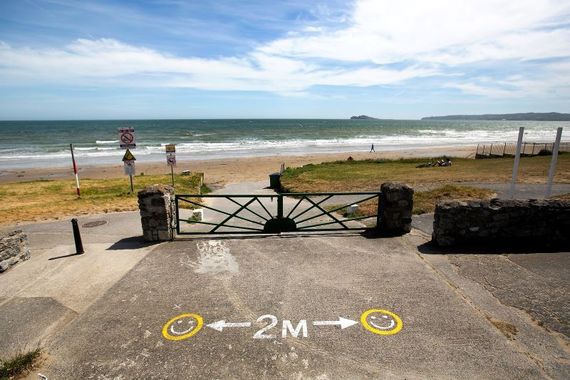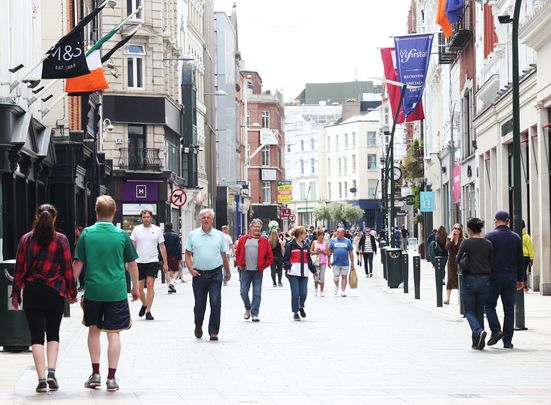For the first time in more than nine weeks no deaths were reported on Monday although, sadly, Northern Ireland recorded eight new deaths the same day.
The Republic’s breakthrough came as the daily recorded number of new illnesses from the virus dropped below 100 in eight out of the nine previous days, down from a daily high of over 1,000 at one stage in mid-April.
As progress continues, campaigners to reduce the social separation from two meters to one are set to increase pressure for the reduction on health chiefs and government ministers.
The Republic’s chief medical officer, Dr. Tony Holohan, is due to meet ministers later this week to discuss the prospects of a reduced separation gap between members of the public.
Read more: How are Irish pubs affected by COVID-19 in Ireland
Taoiseach Leo Varadkar welcomed the first day without coronavirus deaths since March 21 in the Republic as “a significant milestone”.
He said, “This is a day of hope. We will prevail.”
Dr. Tony Holohan.
Holohan said last week that the virus had been “effectively extinguished from the community” as the Irish public had adhered to the COVID-19 restrictions in place since March.
When zero deaths were reported on Monday, he said the progress was “consistent with our overall pattern of reduction.”
“The number of new cases and reported deaths over the past week indicates that we have suppressed COVID-19 as a country. It has taken strict measures to achieve this,” he added.
“It will take another week to see any effect on disease incidence that might arise from the easing of measures in Phase 1.”

Social distancing guidelines.
A cautious easing of restrictions which permitted reopening of some stores and construction sites, and extended the distance people walk from their homes from two kilometers to five kilometers started on May 18.
Read more: Irish castle COVID lockdown dream at Ashford Castle for young couple
Other relaxations of restrictions are due to follow in four phases at three-week intervals from June 8 during summer.
Meanwhile, the Dáil’s COVID-19 Committee, at its second sitting on Tuesday, heard more details why over half the coronavirus deaths happened in nursing and care homes for the elderly in the Republic.
The committee, which is examining the state’s response to the COVID-19 pandemic, was also told that key State organizations left the nursing home sector and its residents “isolated” in the early days of the coronavirus pandemic.
Chief executive of Nursing Homes Ireland, Tadhg Daly, told committee members “the dismay will live forever with us.”
He said, “We were exasperated. The sector required a specific plan. We knew that COVID-19 disproportionately impacts on older people. The planning and focus was almost exclusively on our acute hospitals. Multiple clusters initially emerged in our hospitals. But the numbers in nursing homes started to increase.”
Daly said that in the absence of a national strategy and response for the nursing home sector, challenges emerged. These included insufficient testing and personal protective equipment and the release of patients from acute hospitals to nursing homes without testing.
Sinn Fein TD Louise O’Reilly, speaking in advance of the hearing, said the statement from Nursing Homes Ireland “points to a complete failure of the state to enact a structural plan for the nursing home sector, with the necessary financial and staffing resources, until late in the day.”
The latest available figures on Wednesday showed there were 1,615 COVID-19 deaths in the Republic and 24,735 recorded cases of illness. In Northern Ireland, there were 514 deaths and 4,673 confirmed illnesses.
That brought the total in all Ireland since the pandemic struck in March to 2,120 deaths and 29,307 confirmed cases of the disease as of morning on May 27.
Read more: Belfast pastor credits cleaner’s prayer for getting him through COVID-19 battle




Comments